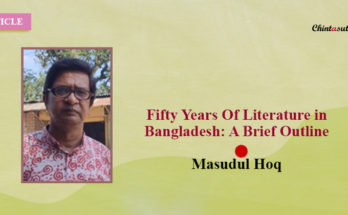Alice Munro is considered to be one of the leading authors in the world of fiction. Her stories muse on the condition and the human ratios seen through the lens of everyday life. She demonstrates unique strengths that have won her so many literary accolades.
Alice Ann Munro is a Canadian short-story writer who won the Nobel Prize in Literature in 2013. Short stories of Munro focus on the emotional lives of the inhabitants of rural Canada. Her tales, frequently synchronized in southwest Ontario, where she spent her childhood, are typically written from the point of view of a young person or teenage girl and address topics of interest particular to women.
The story ‘How I Met My Husband’ unfolds in the first-person narrative of a 15-year old girl. She is not a very bright teenager and not a mannequin standing motionless and speechless in a shop either and hence, possesses all the feelings, emotions, and imaginations befitting her age. Failing to display her talent in education she is sent to work for a veterinary couple in the country with her parents where she meets one of those pilots who earn money by giving short rides to the people who love fun flying. She develops a romantic attachment to this man double her age, and during one of her short visits to his camp, he takes her to bed only to kiss her for a few minutes. She considers this to be an intimate relationship. The day this happens he tells her that, for professional reasons he is going to move to another place the same afternoon, but he likes her very much, will write her letters from wherever he goes, and one day, they will meet again. She believes him from the very core of her heart and the very next week she sits near the mailbox at a fixed time, routinely to check if she has got a letter.
Though she meets the mailman every day, the letter never arrives. Then one day the reality reveals to her, `it never crossed to my mind for a long time a letter might not come. I believed in it comes just like I believed the sun would rise in the morning. …One day walking back …looking across the fairgrounds with the full-blown milkweed and dark teasels, so much like fall, it just struck me: No letter was ever going to come.’
Munro’s writings are the outcome of her strong regional spotlight as she was born to a family of fox and poultry farmers and, narrating her stories in small-town settings, makes her look at things unconventionally and in an unperturbed way.
Munro has been celebrated for her superb evocation of place very often in the small towns of southwestern Ontario, the elegance and naturalness of her style, and her ability to reveal, shifting emotional lives of her characters in stories that range widely across time and place.
Munro raises her story to another dimension with the help of two final paragraphs when she describes how the postman asks the girl to go out with him one day, and after two years of dating, they marry and have children. The final lines read like this, “he always tells the children the story of how I went after him by sitting by the mailbox every day, and naturally, I laugh and let him, because I like for people to think what pleases them and makes them happy.” What a unique manner to tell stories!
Munro is known mainly for his short fiction. Many critics avowed that the stories of Munro often have the emotions and the literary depth of the novels. The question was often put if Munro writes short stories or novels. Alex Keegan, writing in Eclectica, has a simple answer: ‘Who cares? In most Munro stories there are as much as in many novels.’ The remark is completely justified in many ways. Each of the eleven pieces in her ‘The Progress of Love’ seems to contain enough material for a fair-sized novel.
Through casual rhetoric: ‘no letter was ever going to come, one would like about the story is waiting for something that will never happen. Quite a good number of writers have worked on this particular theme.
Maugham, in his famous autobiographical novel ‘Of Human Bondage,’ writes how a ten-year-old boy is subjected to humiliation for his club foot by his classmates and how he goes through an episode of deep religious belief, that through true faith he can get God to heal his club foot, but as this does not happen his belief falters, almost like the girl in Munro’s story who suddenly realizes that no letter will ever arrive.
Alice Munro won the 2009 Man Booker International Prize, not for a particular book, but her lifetime body of work’. I read and re-read `The Progress of Love.’ Later I managed to read ‘Something I have been meaning to Tell You.’ But I was particularly interested in her book ‘The Progress of Love’ as it won Governor General’s Award in 1986, the most prestigious literary award in Canada. I managed to finish translating ‘The Progress of Love’ into Bengali, which was finally published during the Ekushey Boi Mela in the same year by Onnodhara, a publisher in Dhaka.
Munro has been much criticized by many critics at home and abroad, but what I most like about her is the unique way of telling stories that assume the vastness of a novel. With her skimpy words, Munro has the instinctive modus operandi of turning the story into history. Munro has been celebrated for her superb evocation of place very often in the small towns of southwestern Ontario, the elegance and naturalness of her style, and her ability to reveal, shifting emotional lives of her characters in stories that range widely across time and place.
Comments
0 comments




